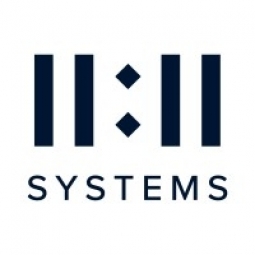Customer Company Size
Large Corporate
Region
- America
Country
- Canada
Product
- 11:11 Private Cloud
- 11:11 Managed Recovery
Tech Stack
- Microsoft SQL Server
- VMware Site Recovery Manager
Implementation Scale
- Enterprise-wide Deployment
Impact Metrics
- Brand Awareness
- Cost Savings
Technology Category
- Infrastructure as a Service (IaaS) - Private Cloud
Applicable Functions
- Business Operation
Use Cases
- Infrastructure Inspection
- Regulatory Compliance Monitoring
Services
- Cloud Planning, Design & Implementation Services
- System Integration
About The Customer
Inspired Entertainment is a business-to-business provider of online gaming solutions. The company is recognized as a premier provider of virtual sports— such as horse and car racing and sports games— available as scheduled events as well as on-demand. Inspired serves the UK and European markets from data centers in Gibraltar, and recently built infrastructure in New Jersey to serve the U.S. market. The company operates in 35 jurisdictions worldwide, supplying gaming systems with associated terminals and content for more than 58,000 gaming machines located in betting shops, pubs, gaming halls and other route operations; virtual sports products through more than 44,000 retail channels; digital games for 100+ websites; and a variety of amusement entertainment solutions with an installed base of more than 19,000 devices.
The Challenge
Inspired Entertainment, a leading provider of online gaming solutions, was planning its entry into the Canadian market. The company needed an established service provider with in-country data centers and proven disaster recovery capabilities. The company traditionally relied on its own IT infrastructure as the platform for service delivery. However, entering a new market posed risks and costs. Inspired’s Director of IT Operations, James Wilson, led a review of potential service providers that could meet the requirements of the regulators, as well as Inspired’s own criteria for technical capabilities and pricing.
The Solution
Inspired Entertainment chose 11:11 Systems, formerly Sungard Availability Services, to host the company’s primary and DR infrastructure from two 11:11 data centers near Toronto. The agreement with 11:11 includes a dedicated hosting environment to support Inspired’s primary production infrastructure in the 11:11 Mississauga, Ontario data center. The environment can accommodate up to 150 virtualized servers running Windows or Linux, plus significant storage capacity. Data held in Microsoft SQL Server production databases is replicated to 11:11 Systems using VMware Site Recovery Manager (SRM) to manage failover and recovery and to meet its commitment for a 2-hour RTO and 30-minute RPO.
Operational Impact
Quantitative Benefit

Case Study missing?
Start adding your own!
Register with your work email and create a new case study profile for your business.
Related Case Studies.

Case Study
Remote Monitoring for Environmental Compliance
Emerson wanted to provide a connected environmental analyzer to their customers. They wanted to leverage IoT technologies to provide a software solution that was easy to use, real-time and centralized. Compliance with pollution control board guidelines and the ability to remotely calibrate and troubleshoot these devices was the primary objective. Requirements - Centralized Remote Monitoring. - IoT Based Smart Environmental Analyzers. - Remote Calibration and Troubleshooting. - User Friendly Application. - Reporting & Dashboards. - Compliance with pollution control board guidelines.

Case Study
ELI LILLY ADOPTS MICROMEDIA’S ALERT NOTIFICATION SYSTEM
Pharmaceutical production is subject to a strict set of enforced rules that must be adhered to and compliance to these standards is critically necessary. Due to the efforts of WIN 911’s strategic partner Micromedia, Lilly was able to adopt an alarm notification infrastructure that integrated smoothly with their existing workflows and emergency hardware and protocols. These raw energy sources enable the industrial process to function: electricity, WIN-911 Software | 4020 South Industrial Drive, Suite 120 | Austin, TX 78744 USA industrial steam, iced water, air mixtures of varying quality. Refrigeration towers, boilers and wastewater are monitored by ALERT. Eli Lilly identified 15000 potential variables, but limitations compelled them to chisel the variable list down to 300. This allowed all major alarms to be covered including pressure, discharge, quantity of waste water discharged,temperature, carbon dioxide content, oxygen & sulphur content, and the water’s pH.

Case Study
The Home Depot's IT Innovation with Nutanix: A Case Study
The Home Depot, the world's largest home improvement retailer, was facing a significant challenge in enhancing the performance and scalability of its IT infrastructure while reducing the total cost of ownership (TCO). The company's traditional approach of upgrading to faster servers and more efficient storage was no longer sufficient. The Home Depot needed a more innovative solution to reduce TCO and improve operational efficiency for its vast retail store and e-commerce business. The company was also looking for a way to consolidate its server, storage, and virtualization teams into a single operations group to optimize and manage the entire infrastructure stack from a single console. The challenge was to find a solution that would allow them to achieve these goals while also enabling them to quickly deploy new applications to internal users and customers.

Case Study
IoT Solutions Give Commercial Fishing Real-time insights
Technology to support vessels in the commercial fishing industry had not changed significantly since the advent of radar. Over the past 40 years commercial fishing in the United States has continued to be one of the most active, yet regulated industries. The combination of federal regulations and lack of technology created an opportunity for Faria Watchdog to go-to-market with a solution.

Case Study
IFFCO Boosts IT Performance and Innovates Agriculture with Oracle Cloud
Indian Farmers Fertiliser Cooperative Ltd. (IFFCO), the world’s largest manufacturer and marketer of fertilizers in the cooperative sector, was facing several challenges in its quest to innovate and improve the livelihood of farmers in India. The organization had recently launched a new product, nano urea, which brought new demands to IFFCO’s cloud computing needs. The organization needed a reliable cloud vendor to support the processes of 6–7 new manufacturing plants during the upcoming year, enhancing its production capability 300–350 million bottles of nano urea to meet increasing demand. IFFCO’s cloud adoption was driven by a need to innovate. The organization wanted capabilities for a dynamic business that can adapt to the changing needs of the market while growing fast. However, it was inhibited by rigid on-premises data center deployments and the overhead of maintaining legacy systems. IFFCO wanted to apply the elasticity and availability of cloud for improving overall performance of applications at lowest possible operational overhead. Lastly, IFFCO needed to provide the benefits of its technology to all its stakeholders, including employees, members, transporters, and farmers, some of whom have limited literacy. To accommodate all stakeholders, IFFCO wanted to add a voice interface to its applications.

Case Study
Revamping EE's Legacy ERP: A Case Study on BT's Strategic Transformation
EE, even after its merger with BT, was operating its ERP estate on legacy infrastructure, hosted on the premises of a third-party supplier. This outdated system resulted in a volume-based operational model, higher time to market, longer delivery cycles, and unsatisfactory customer experience. BT recognized the need for a strategic transformation of these aging ERP systems and sought a partner who could proactively manage application services. The partner was also expected to handle development requirements associated with application management services, drive accountability, and ownership with a time and target-driven transformation of these services. BT's primary goals were to improve customer experience, reduce cycle time, and measure these improvements with precision.







